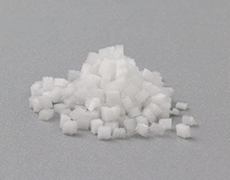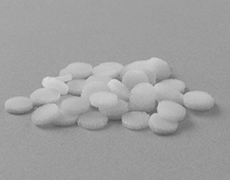Newsletters
Atelocollagen Sponge Honeycomb for the sustained release of a physiologically active substance
01 March 2017
In this edition of the newsletter, we introduce a research paper describing facial nerve regeneration using Atelocollagen Sponge Honeycomb.
Nerve regeneration in facial nerve injury model by administration of M2 macrophage inducer
Article information
Secreted Ectodomain of Sialic Acid-Binding Ig-Like Lectin-9 and Monocyte Chemoattractant Protein-1 Synergistically Regenerate Transected Rat Peripheral Nerves by Altering Macrophage Polarity.
Kano F, Matsubara K, Ueda M, Hibi H, Yamamoto A
Stem Cells. 2017 Mar;35(3):641-653. PMID: 27862629
Overview
The author’s group previously reported that conditioned medium (CM) of human exfoliated deciduous dental pulp stem cells (SHEDs) is involved in the functional recovery of spinal cord injury model rats through induction of differentiation of anti-inflammatory M2 macrophages.
On the other hand, Monocyte Chemoattractant Protein-1 (MCP-1) and the secreted ectodomain of Sialic Acid-Binding Ig-like Lectin-9 (sSiglec-9) have been identified as M2 macrophage inducers present in SHED-CM; the possibility of peripheral nerve regeneration using both inducers remained unknown.
Therefore, the authors applied MCP-1 and sSiglec-9 to Atelocollagen Sponge Honeycomb and transplanted the sponge into a rat facial nerve injury model. The vibrissae movement score was remarkably improved following the transplantation, and a large nerve fascicle containing many myelinated nerves was observed.
In addition, expression of inflammatory mediators was decreased, while expression of anti-inflammatory mediators was increased in nerves recovered 24 hours after facial nerve cutting and transplantation.
In contrast, the facial nerve regeneration effect mediated by MCP-1 and sSiglec-9 was inhibited when M2 macrophages were depleted using mannosylated-Clodrosome.
Atelocollagen sponge with a honeycomb-like pore structure
Product name
– Atelocollagen, Honeycomb Sponge (Cat. No.: CSH-10)
– Atelocollagen, Honeycomb Disc 96 (Cat. No.: CSH-96)

